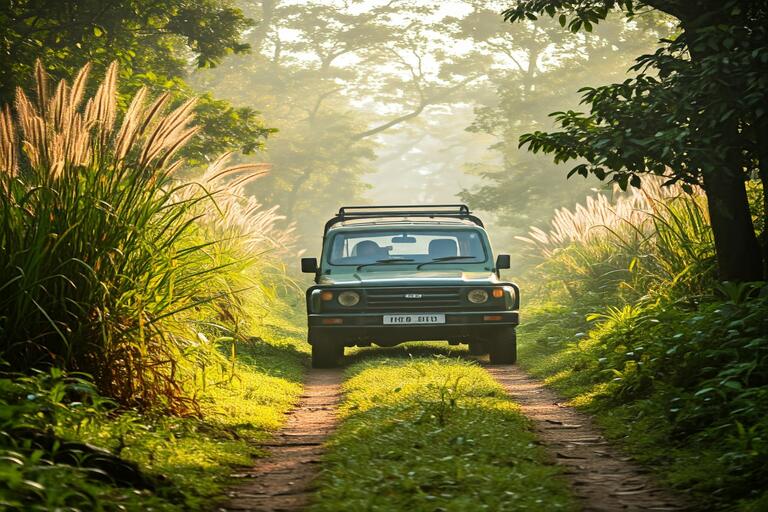
Kaziranga National Park is located in the northeastern state of Assam, known for its rich biodiversity and conservation efforts. The park is spread across the floodplains of the Brahmaputra River and is famous for being the natural habitat of the one-horned Indian rhinoceros. Thanks to dedicated conservation initiatives, this species has been brought back from the brink of extinction.
Aside from the rhinoceros, the park is home to a diverse range of wildlife, including tigers, elephants, wild water buffalo, and many bird species. The park’s unique ecosystem, which comprises tall grasslands, wetlands, and dense forests, provides a sanctuary for these endangered species. Not only does Kaziranga National Park serve as a vital refuge for wildlife, but it also attracts nature enthusiasts and tourists from around the world who come to witness its natural beauty and unparalleled biodiversity.
What Makes Kaziranga National Park Special?
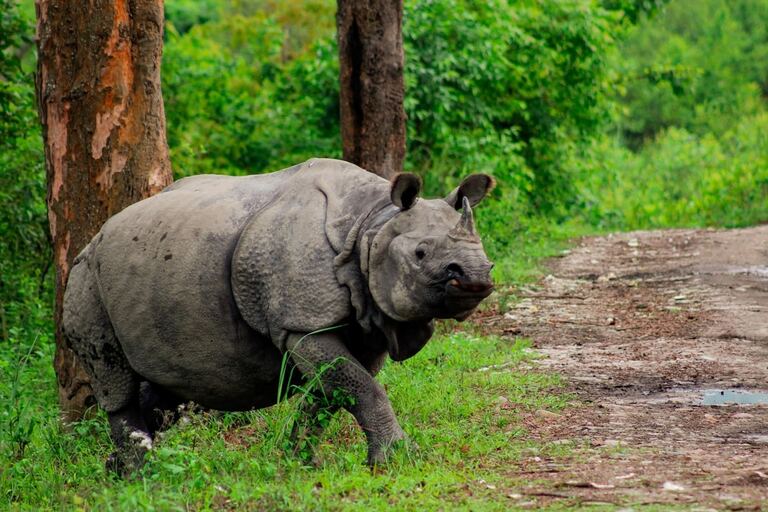
Kaziranga National Park is renowned due to several factors that make it truly special. First, it is home to the world’s largest population of one-horned Indian rhinoceros. The park’s success in protecting and increasing the rhino population is a testament to its dedication to wildlife preservation.
Secondly, Kaziranga’s biodiversity is remarkable, with a diverse range of flora and fauna, including Bengal tigers, Asian elephants, wild water buffalo, and many bird species. The park’s varied ecosystems, including grasslands, wetlands, and forests, support this rich wildlife diversity, making it a haven for nature enthusiasts and researchers alike.
Additionally, Kaziranga National Park Assam plays a crucial role in preserving the unique habitat of the Brahmaputra floodplains, which is vital for maintaining ecological balance in the region. Its UNESCO World Heritage Site designation underscores its global significance as a key conservation area.
What to Spot at Kaziranga National Park?
Kaziranga National Park Safari offers diverse wildlife that attracts nature enthusiasts and photographers worldwide. Here are some of the iconic species you can spot at Kaziranga:
1. One-Horned Rhinoceros
Kaziranga is famous for its population of one-horned rhinoceros, with the park being home to the majority of the world’s population of this endangered species.
2. Asian Elephants
Kaziranga is also home to a significant population of Asian elephants, often seen roaming the grasslands and forests of the park.
3. Bengal Tigers
While tigers are elusive and sightings are not guaranteed, Kaziranga is known to have a healthy population of Bengal tigers, offering visitors a chance to spot these majestic big cats in their natural habitat.
4. Wild Water Buffalo
Another highlight of Kaziranga’s wildlife is the wild water buffalo, a species that has found sanctuary in the park and is often seen grazing in the marshy areas.
5. Swamp Deer
Kaziranga is one of the few places to spot the rare swamp deer, also known as barasingha, particularly in the grasslands and wetlands.
6. Other Wildlife
Kaziranga is also home to hog deer, sambar deer, wild boar, otters, gaur (Indian bison), and a rich diversity of reptiles, including snakes and turtles.
7. Birdlife
The park is a paradise for birdwatchers, with over 450 species of birds recorded. You can spot various birds, including pelicans, storks, eagles, hornbills, and numerous waterfowl species.
Exploring Kaziranga National Park through jeep safaris, elephant safaris (where available and ethically managed), and boat rides offers the best chances of encountering these fascinating creatures in their natural habitat.
What are the Safari Slots in Kaziranga?
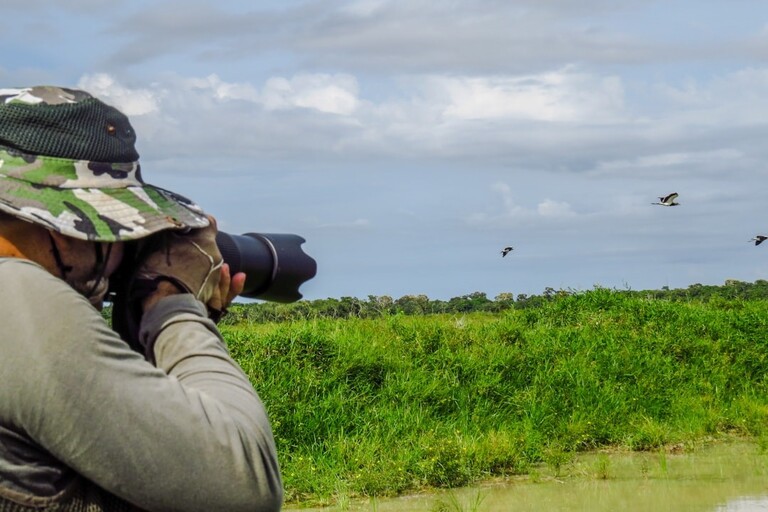
The safari slots in Kaziranga National Park are typically divided into morning and afternoon sessions. Here’s a general outline of the Kaziranga National Park Safari Slots:
Morning Safari
- Early Morning Slot: This Kaziranga safari slot usually starts at around 7:00 AM and lasts for about 3–4 hours. It is considered the best time for wildlife sightings, especially for birdwatching and spotting animals like elephants, rhinoceroses, and deer.
- Late Morning Slot: Some parks may offer a second-morning safari slot starting around 9:00 a.m., although availability can vary.
Afternoon Safari
- Afternoon Slot: The afternoon safari typically starts at around 2:00 PM and lasts until the evening. This slot is suitable for wildlife enthusiasts who prefer exploring the park during the cooler hours of the day and have a chance to spot Kaziranga National Park animals like tigers and wild water buffalo.
- Sunset Safari: In some parks, a sunset safari slot may start later in the afternoon, allowing visitors to witness the park’s beauty during the golden hour.
Obtaining a Safari Permit at Kaziranga: Process and Costs
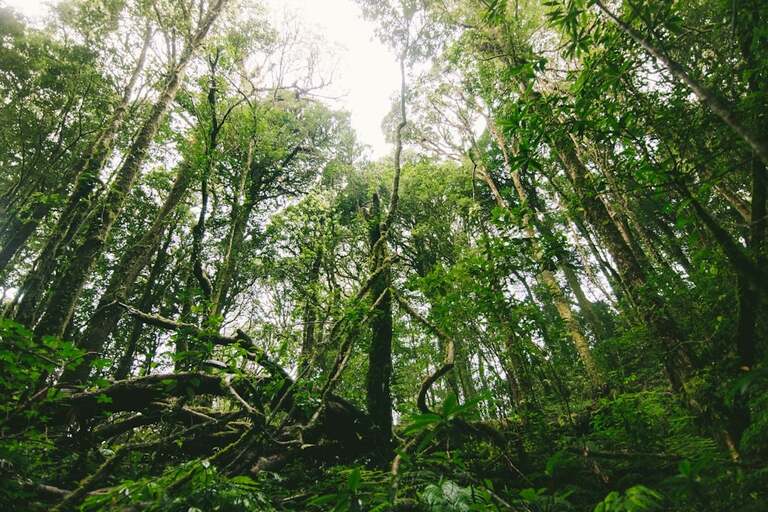
To book a Kaziranga safari permit, you can follow these steps:
- Visit the official website: Start by visiting the official website of Kaziranga National Park or the Assam Forest Department’s website.
- Select Safari type: Choose the type of safari you wish to book, such as elephant safari, jeep safari, or boat safari. Each safari type offers a unique experience and allows visitors to explore different park areas.
- Check Availability: Check the availability of safari slots for your preferred date and time. It is advisable to book well in advance, especially during the peak tourist season, as safari slots can fill up quickly.
- Provide Details: Enter your personal details, including your name, contact information, and the number of visitors in your group.
- Make Payment: Pay the required safari permit fees online through the website’s secure payment gateway. The cost of safari permits can vary depending on the safari type, duration, and whether you’re a domestic or international visitor.
- Receive Confirmation: Once your booking is confirmed and payment is processed, you will receive a confirmation email or SMS with your safari permit details, including the safari date, time, and meeting point.
- Print or Download Permit: Print or download your safari permit and carry it with you on the day of the safari. Make sure to arrive at the designated meeting point well before the scheduled safari time.
As for the cost of safari permits at Assam Kaziranga Park, here is a general guideline:
- Elephant Safari: The cost ranges from approximately INR 750 to INR 1,500 per person for domestic visitors and higher for international visitors.
- Kaziranga Jeep Safari: The cost varies depending on the zone and duration of the safari, with prices typically ranging from around INR 1,000 to INR 3,000 per person.
- Boat Safari: Boat safari costs can range from approximately INR 500 to INR 2,000 per person, depending on the type of boat and duration of the safari.
Which zones are the best at Kaziranga National Park?
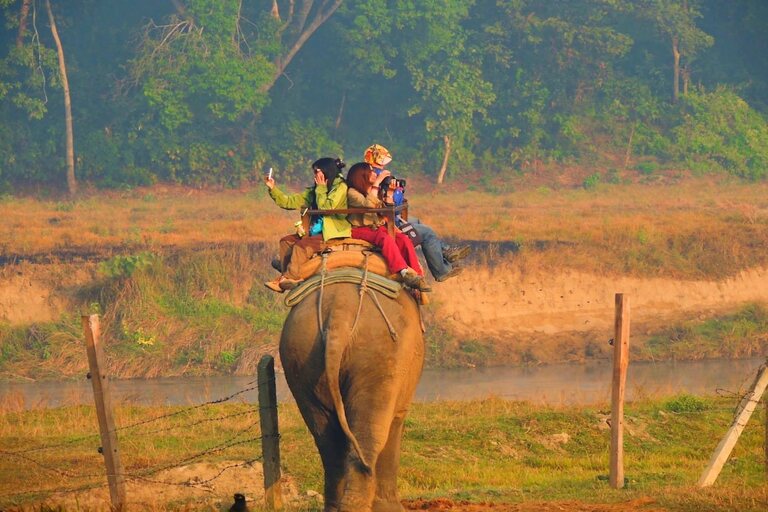
The best zones to visit in Kaziranga National Park for wildlife sightings and overall safari experiences may vary depending on the time of year, weather conditions, and the specific wildlife you wish to see. However, here are some of the popular zones known for their wildlife diversity and scenic beauty:
1. Central Range (Kohora Zone)
This zone is one of the most accessible and popular areas of Assam Kaziranga Park. It is known for sightings of one-horned Indian rhinoceros, elephants, wild water buffalo, deer, and a variety of bird species. The Central Range is ideal for both Kaziranga jeep safaris and elephant safaris.
2. Eastern Range (Agaratoli Zone)
The Eastern Range is renowned for its lush forests, wetlands, and grasslands. It is a great zone for birdwatching, especially during the winter months when migratory birds flock to the area. Wildlife sightings here may include Kaziranga National Park golden tigers, rhinoceroses, elephants, and various waterfowl species.
3. Western Range (Bagori Zone)
The Western Range offers a mix of grasslands, forests, and water bodies, making it an excellent zone for spotting wildlife such as rhinoceroses, elephants, tigers, wild water buffalo, and deer. The Bagori Zone is also known for its picturesque landscapes.
4. Burapahar Range
This lesser-visited range is known for its hilly terrain and dense forests. It offers a unique safari experience with chances to spot wildlife like elephants, tigers, hoolock gibbons, and various bird species. Jeep safaris are usually conducted in the Burapahar Range.
5. Sohola and Rangamati Ranges
These ranges are relatively quieter and less frequented by tourists, making them ideal for a peaceful and immersive safari experience. Wildlife sightings may include elephants, deer, wild boars, and birdlife.
What is the Best Time to Visit Kaziranga National Park Assam?
The best time to visit Kaziranga National Park largely depends on the experiences you seek and the wildlife you wish to observe. Here is a breakdown of the seasons and their highlights:
1. Winter (November to February)
This is the peak tourist season, as the weather is pleasant, with cooler temperatures ranging from 5°C to 25°C. Wildlife sightings are generally good during this time, especially for one-horned rhinoceroses, elephants, and birds. The park’s vegetation is also less dense, making it easier to spot wildlife.
2. Spring (March to April)
Spring is a good time to visit Kaziranga, as the weather starts warming up and the grasslands become greener. It is an excellent time for birdwatching, as migratory birds start arriving, adding to the park’s avian diversity.
3. Monsoon (May to September)
The monsoon season brings heavy rainfall to Kaziranga, leading to the park’s closure from May to October. Flooding can occur, making it challenging to explore the park. However, the lush greenery and rejuvenated landscape post-monsoon can be beautiful.
4. Post-Monsoon (October)
October marks the reopening of Kaziranga after the monsoon season. The park is lush and vibrant, and wildlife sightings, including rhinoceroses and elephants, are frequent. However, the weather can still be humid during this time.
What Activities Can You Enjoy in Kaziranga Besides Jeep Safaris?
In addition to jeep drives, Kaziranga National Park tour offers a range of activities and experiences for visitors to enjoy:
1. Elephant Safari
Experience a thrilling ride on the back of an elephant through the grasslands and forests of Kaziranga. Elephant safaris provide a unique perspective and excellent opportunities for wildlife sightings, including one-horned rhinoceroses, elephants, and birds.
2. Boat Safari
Explore the waterways and wetlands of Kaziranga on a boat safari, offering a chance to spot aquatic wildlife such as dolphins, water birds, and marsh-dwelling animals. Boat safaris are available in areas like the Brahmaputra River and nearby water bodies.
3. Birdwatching
Kaziranga is a paradise for birdwatchers, with over 450 species of birds recorded in the park. Join guided birdwatching tours or explore the park’s diverse habitats to spot colourful migratory and resident bird species.
4. Nature Walks
Take leisurely nature walks or guided hikes through the park’s scenic trails, offering opportunities to observe flora, fauna, and the unique ecosystems of Kaziranga up close. Learn about Kaziranga National Park Assam’s biodiversity, conservation efforts, and indigenous plants during these walks.
5. Cultural Experiences
Immerse yourself in the local culture and traditions of the Assamese people by participating in cultural activities such as dance performances, traditional music shows, and visits to nearby villages to interact with local communities.
6. Wildlife Photography
Capture stunning photographs of Kaziranga’s wildlife, landscapes, and natural beauty. The park’s diverse wildlife, picturesque vistas, and vibrant flora make it a photographer’s paradise.
7. Visit Orchid Park and Tea Gardens
Explore attractions like Kaziranga Orchid Park, home to a variety of exotic orchid species, and nearby tea gardens where you can learn about tea cultivation and sample Assam’s renowned teas.
8. Wildlife Conservation Tours
Join educational tours and programmes organised by the park authorities or conservation organisations to learn about wildlife conservation efforts, anti-poaching measures, and the importance of preserving natural habitats.
These activities offer a well-rounded experience of Kaziranga National Park, allowing visitors to connect with nature, wildlife, culture, and conservation in this biodiverse region.
How do I get to Kaziranga National Park?
To get to Kaziranga National Park, you can follow these transportation options:
By Air:
The nearest airport to Kaziranga National Park is Jorhat Airport (JRH), approximately 97 kilometres away. You can fly to Jorhat Airport from major cities like Guwahati, Kolkata, and Delhi. You can hire a taxi or take a bus from the airport to reach Kaziranga. Alternatively, you can fly to Lokpriya Gopinath Bordoloi International Airport (GAU) in Guwahati, about 225 kilometres from Kaziranga. Guwahati has better flight connectivity with major cities across India.
By Train:
The nearest major railway station to Kaziranga is Furkating Junction (FKG), located approximately 75 kilometres away. Furkating is well-connected to cities like Guwahati, Kolkata, Delhi, and others. From Furkating, you can hire a taxi or take a bus to reach Kaziranga.
By Road:
Kaziranga National Park is well-connected by roadways. You can reach Kaziranga by hiring a taxi or driving from nearby towns and cities like Guwahati, Jorhat, Tezpur, and Golaghat. National Highway 37 (NH-37) passes through Kaziranga, making it easily accessible by road. Private buses, state-run buses, and taxis are available for transportation.
Kaziranga National Park is a testament to India’s rich biodiversity and commitment to wildlife conservation. Its lush landscapes, diverse flora and fauna, and successful conservation efforts have made it a global icon of wildlife sanctuaries.
Embark on an unforgettable journey to Kaziranga National Park with SOTC and discover the wonders of India’s rich biodiversity. Book your Assam tour packages today and immerse yourself in the magic of conservation and natural beauty!





Related Post
Top Places For Monsoon Treks in Maharashtra
Know Why You Should Visit Lonavala in Monsoon
Explore the List of Top Lonavala Waterfalls That You Must Visit This Monsoon
Why is Mahabaleshwar in Monsoon a Real Treat?
Top 15 Delightful Monsoon Destinations in Maharashtra
Top 10 Beautiful Places to Visit Near Pune in Monsoon
The Best Places to Visit in July to Embrace the Beauty of Monsoon in India
Monsoon Magic: The Best Places to Visit in September in India
Top 10 Breathtaking Places to Visit in Monsoon in India for a Magical Escape
The Behdienkhlam Festival: A Unique Cultural Experience in Meghalaya